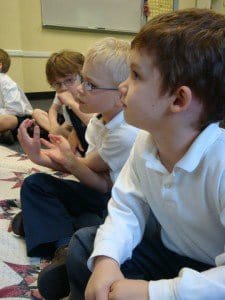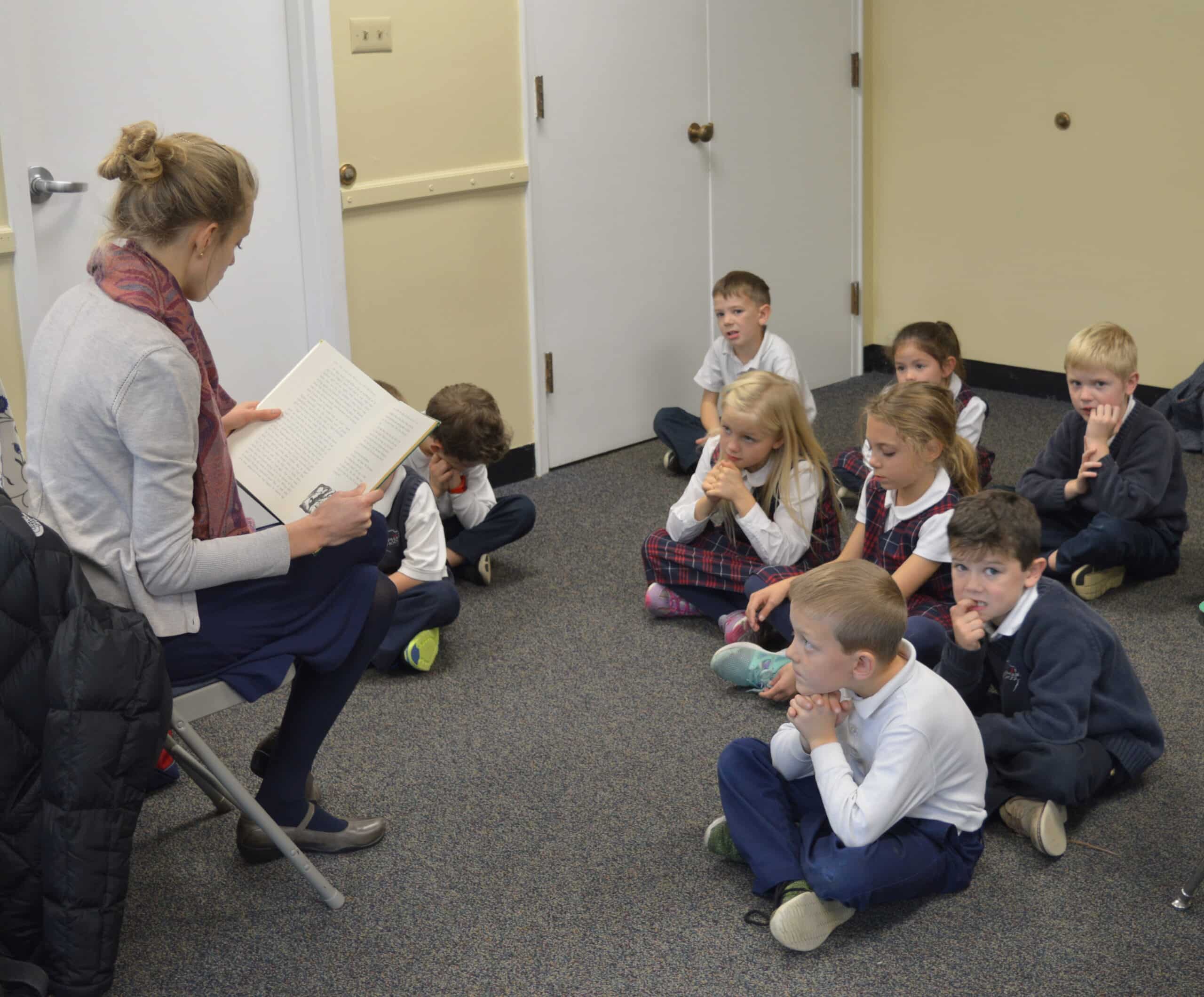By Julie Reynolds, Director of Curriculum
At Clapham, students narrate across the disciplines. We encourage our families to narrate with their children at home to help them along in the learning process, but it is sometimes helpful to stop and remind ourselves of the details of narration.
So, what exactly is narration?
Narration is simply a retelling of what is heard, read, or seen. The idea is for a student to recall or tell back according to the sequence of information and the author’s detail and language. For example, in our classes, it may involve retelling a short portion of a story that has been read. As the younger students learn this discipline, their narrations may be a word for word recollection of what has been read. As they progress, narration may be a retelling in their own words, including their own interpretations, feelings, and conclusions. Portions narrated get longer, as well, with more experience. Narration can also be a description of what they have seen during picture study or heard in a composer study. It can take written form for everything from a retelling of a field trip experience to what they’ve read in their history texts.
Charlotte Mason says that children narrate by nature and that this tool capitalizes on their keen abilities:
Narrating is an art, like poetry-making or painting, because it is there, in every child’s mind, waiting to be discovered, and is not the result of any process of disciplinary education. A creative fiat calls it forth. ‘Let him narrate’; and the child narrates, fluently, copiously, in ordered sequence, with fit and graphic details, with a just choice of words, without verbosity or tautology, so soon as he can speak with ease. [1]
We’ve all experienced this in a variety of ways, whether a child is telling about his experience at soccer practice, at a social occasion, or reporting an offense of a sibling.
Now that we have defined it, we can ask: what are the benefits of narration?

what are the benefits of narration?
First, it hones the habits of observation and attentiveness. Students know they must be prepared to narrate and, as a result, will seek to listen and understand. Parents often notice a child’s attention span lengthen and an increased enthusiasm for a good story. Narration makes the learning process active, as students must “own” the material themselves in order to tell it back. They notice more detail about what they see, for example, in Picture Study or Nature Study. Their comprehension of literature is enlarged as they put the story in sequential order and notice clues about the story line or character development. Their retention of facts is increased when they narrate back during subjects such as math, history, or Bible.
Second, oral narration elicits language, giving students confidence in speaking. The use of good literature and elevated language also means they are enlarging their own vocabulary when narrating back something read to them. They may be repeating new patterns of expression and will develop an overall expertise in articulation as they narrate more fluently and in more volume. This is wonderful preparation for writing; they have digested the subject matter and can express themselves in confident and creative ways because of the way narration has stretched their attending, thinking and imagining skills.
Third, narration produces active, thoughtful minds: “If the mind is to be active, it must do the work of attending, reflective thinking, and expression through the work of narration.”[2] As a student narrates, he naturally performs the “act of knowing.” It keeps a student’s mind active and engaged. That kind of mind will naturally seek out the challenges of learning and the best of literature and art because of the continual desire of the mind to digest and to learn.
I hope this has given you a broader sense of narration and why we use this pedagogical technique at Clapham. Clearly, this is one way our school is unique. What at first glance seems to be a simple tool to effect learning can have astounding and long lasting results.
[1] Charlotte Mason, Home Education (London: Kegan Paul, Trench, Trubner, 1896, 1930), 231.
[2] Elaine Cooper, ed. When Children Love to Learn (Wheaton: Crossway Books, 2004), 132.

